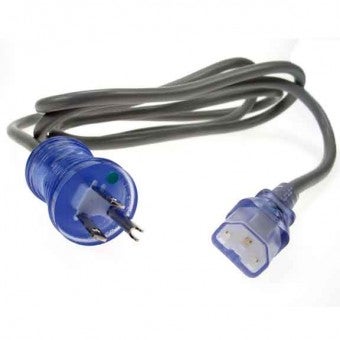
Yet another day at a local hospital in this rural setting in and facing regular electricity cuts like usual, did not bother me much until a serious emergency case arrived in the hospital. It was a case of cardiac arrest and we required all medical equipment's fully functional then and there!
Suddenly when we were not able to connect one of the ventilator wires, a newly joined ward boy suggested of using just another Computer Power Cords to replace and make the equipment functional for the time being. I found the suggestion suitable bit, luckily the more experienced nurse stopped him doing the same and explained that it is very important to understand hospital grade power cords being different from the ones we use otherwise; or else, it will not just affect the equipment but ultimately a patient’s life which is more precious than anything else.
A power cord, mains cable or line cord is a cable, which temporarily connects an appliance to the mains electricity supply via a wall socket or extension cord. The terms are generally used for cables using a power plug to connect to a single-phase alternating current power source at the local line voltage.
The terms power cable, mains lead, flex or kettle lead are also used. A lamp cord (also known as a zip cord) is a light-weight, un-grounded, single-insulated two-wire cord used for small loads such as a table or floor lamp.
This is something I gathered from various sources when i tried to understand to discuss it further, as to what makes hospital grade power cords different from other power cords. Power cords used in hospital environments are subject to special requirements rigorous tests which check durability and conductivity to ensure that the product operates at peak levels.
Once a product line is approved, it is stamped with mark of safety. That is why Medical Power Cords are often referred to as Hospital Grade Power Cords.
Hospital Grade Power Cords are divided, basically into three categories: Cords with One End feature exposed wire on the opposite end making them ideal for hard-wiring into appliances. Cords with Two Ends, which are used when the application you are powering has a built-in inlet for the connection. Finally, Multi Leg Cords feature a splitter that supports two or more receptacles.
Though, various countries have standards for the overall medical equipment, a few countries have standards regarding specific medical-related components like plugs and cords. It should also be understood that, for the countries which have hospital-grade or medical application standards on components, it is very important to know what the requirements are so as to comply with that country or region’s rules.
As gathered from various sources, countries/regions that have hospital-grade or medical application standards on specific components include:
Australia/New Zealand, Denmark, Japan, and North America.
Power cords and cord-sets as well as plugs and sockets are subject to special rules. Aside from these regions, there is no differentiation for plugs, sockets, and cords used in a medical setting versus a non-medical setting.
